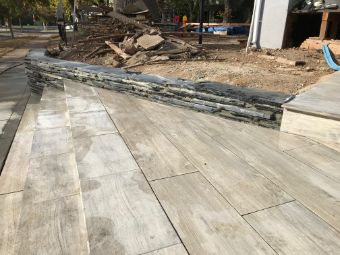San Clemente Stone Masonry

When a stone is mined from a quarry, it will often not be in the desired size and shape. This is why it is necessary to cut it into the necessary shape and size with the right tools. The process of doing this is referred to as a stone dressing. The stones will often come with a soft surface immediately after quarrying. This is why the stone dressing is necessary. By dressing stones, they not only get a good surface, but they also become more useful to the masonry work.
Reach us at (949) 541-2077 and get free estimates.
The Role of Stone Masonry in Dressing
Stone dressing requires technical skills and should be left to a qualified masonry contractor. This is because professional masons understand the necessary materials, drawings, designs, and specifications. The stone dressing can be done in the quarry to minimize the weight required for transportation and to minimize cost.
The stone dressing can be done using a wide range of tools, depending on the required finish. A chisel and a quarry hammer can be used to achieve the rough finishes. To achieve the polished or rubbed finishes, the cut stone surface can be rubbed or ground with a pumice stone, water and sand, and machine.
Types of Finishes
Stoner dressing can help to achieve different kinds of finishes. These include:
- Axed. A stone axe is used to dress some hard stones like granites
- Combed or dragged finish. This is commonly used for soft stones. The surface is rubbed with a steel comb on all sides of the stone.
- Boasted. This is also referred to as a droved finish. Vertical, horizontal, parallel or inclined lines are made using a tool referred to as a boaster to create a rounded shape
- Furrowed. The stone’s middle project from one side by about 15 mm, and some deep grooves are made across the stone.
- Molded. Various shapes of decorative strips are made into stones using different tools or machines
- Polished. This is often for granites, marbles and much more
- Punched. The stone surface is depressed by a machine to create rises and hollows
- Reticulated. This leaves a margin on the surface. Irregular shapes are also created
- Scrabbling. Any irregular projections are gotten rid of with a scrabbling hammer to create a rough finish.
- Rusticated. A patterned or rough surface is cut into the visible side of the masonry block
- Sunk. Wide grooves are made into the original surface
- Vermiculated. This looks like the reticulated dressing, but it leaves curved shapes to provide a look that appears like it has been eaten by worms.
To determine the best type of finish for your stones, you should talk to a qualified stone masonry contractor in San Clemente. If you are searching for one, call San Clemente Concrete on (949) 541-2077.
